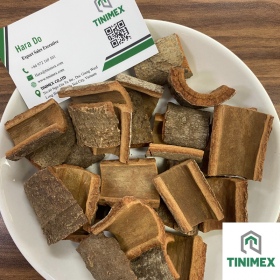5 Critical Risks Buyers Must Know Before Importing Square Cut Cassia
5 Critical Risks Buyers Must Know Before Importing Square Cut Cassia
Meta Description: Discover 5 major risks that can impact your square cut cassia imports—and how to avoid costly sourcing mistakes with expert supplier tips.
URL: https://tinimex.com/square-cut-cassia-import-risks
Table of Contents
- Introduction: Why Cassia Imports Require Due Diligence
- Risk #1: Non-Compliant Oil and Moisture Content
- Risk #2: Poor Cut Uniformity and Contamination
- Risk #3: Missing or Incorrect Export Documents
- Risk #4: Inconsistent Grading Between Shipments
- Risk #5: Supplier Inexperience or Misrepresentation
- Final Thoughts: Import Smart, Source from Certified Suppliers
- Contact Tinimex – Your Reliable Square Cut Cassia Export Partner
1. Introduction: Why Cassia Imports Require Due Diligence
Importing square cut cassia may seem straightforward—but when sourcing from developing markets, international buyers face several hidden risks. From quality inconsistency to shipment delays and customs rejections, these risks can quickly lead to cost overruns, compliance failure, and loss of customer trust.
Avoiding these pitfalls requires experience, documentation, and reliable supplier support. Below are the 5 most critical risks to consider when sourcing square cut cassia globally.

2. Risk #1: Non-Compliant Oil and Moisture Content
Low oil content = weak aroma. High moisture = risk of mold.
Cassia should meet key thresholds:
- Volatile oil (VO) ≥ 2.5% (ideally ≥ 3%)
- Moisture ≤ 12% to pass customs & shelf life audits
Consequences:
- Rejection by quality assurance teams
- Product spoilage during shipping
- Failed regulatory inspection (especially in EU, USA)
Solution: Always request COA with oil/moisture data. Choose suppliers offering pre-shipment lab verification.

moisture/oil test report sample: COA from Tinimex showing compliant VO and water activity levels
3. Risk #2: Poor Cut Uniformity and Contamination
Inconsistent sizing causes uneven blending, flavor loss, and slower processing.
Contamination may include:
- Bark dust
- Shards or oversized bark pieces
- Insect remnants or external debris
Consequences:
- Complaints from manufacturers or retailers
- Clogged machines or damaged packaging lines
- Rejection in visual quality checks
Solution: Ask for product photos, cut size specification (e.g. 2–4 cm), and sorting details before confirming your order.
4. Risk #3: Missing or Incorrect Export Documents
Improper or incomplete documentation is a top cause of customs delays.
Essential documents include:
- COA and phytosanitary certificate
- Fumigation declaration
- Invoice + packing list + HS code alignment
Consequences:
- Container hold-up at port
- Fines or clearance delays
- Loss of delivery timeline and buyer reputation
Solution: Work with exporters experienced in square cut cassia trade. Request documentation samples before placing bulk orders.
cassia export documentation bundle: Verified pack showing certificates used in recent EU shipment
5. Risk #4: Inconsistent Grading Between Shipments
One of the most common mistakes: assuming that “square cut” always means the same grade.
Grading issues include:
- Size range (1–3 cm, 2–4 cm, 3–6 cm)
- Thickness variations
- Mix of inner and outer bark layers
Consequences:
- Batch-to-batch flavor inconsistency
- Labeling inaccuracies
- Disruption in automation or retail packing
Solution: Specify cut grade, packaging weight, and moisture specs in your PO. Confirm with pre-shipment batch photos.
6. Risk #5: Supplier Inexperience or Misrepresentation
Many suppliers advertise “export-grade cassia” but lack:
- Certification (Organic, HACCP, ISO)
- Internal QC process
- Real trade experience
Red flags:
- No company website or inconsistent branding
- Poor communication during negotiation
- Pressure to skip documentation or sampling
Solution: Only work with certified, traceable exporters. Look for proven experience in bulk trade.
Image 3 – warehouse label on cassia batch: Fully marked export bag from Tinimex with batch ID, grade, and ship-to country
7. Final Thoughts: Import Smart, Source from Certified Suppliers
Importing spices like square cut cassia requires more than just price negotiation. You need clear standards, verifiable compliance, and shipment-ready quality.
By avoiding these 5 risks, you can:
- Avoid costly delays and returns
- Build trust with food manufacturing partners
- Improve your margins and logistics planning
8. Contact Tinimex – Your Reliable Square Cut Cassia Export Partner
TINIMEX CO., LTD
🏢 4th Floor, No. 40 Ngo Gia Tu Street, Duc Giang Ward, Long Bien District, Ha Noi, Vietnam
📧 info@tinimex.com
🌐 https://tinimex.com
📞 +84 36 680 8683 (WhatsApp / Zalo)
Why choose Tinimex:
- Full documentation with every export batch
- Pre-sorted cassia (2–4 cm, 3–6 cm sizes)
- Consistent quality backed by COA, Organic, HACCP
- Serving spice buyers in 20+ countries since 2015
Internal Links:
External Link:

